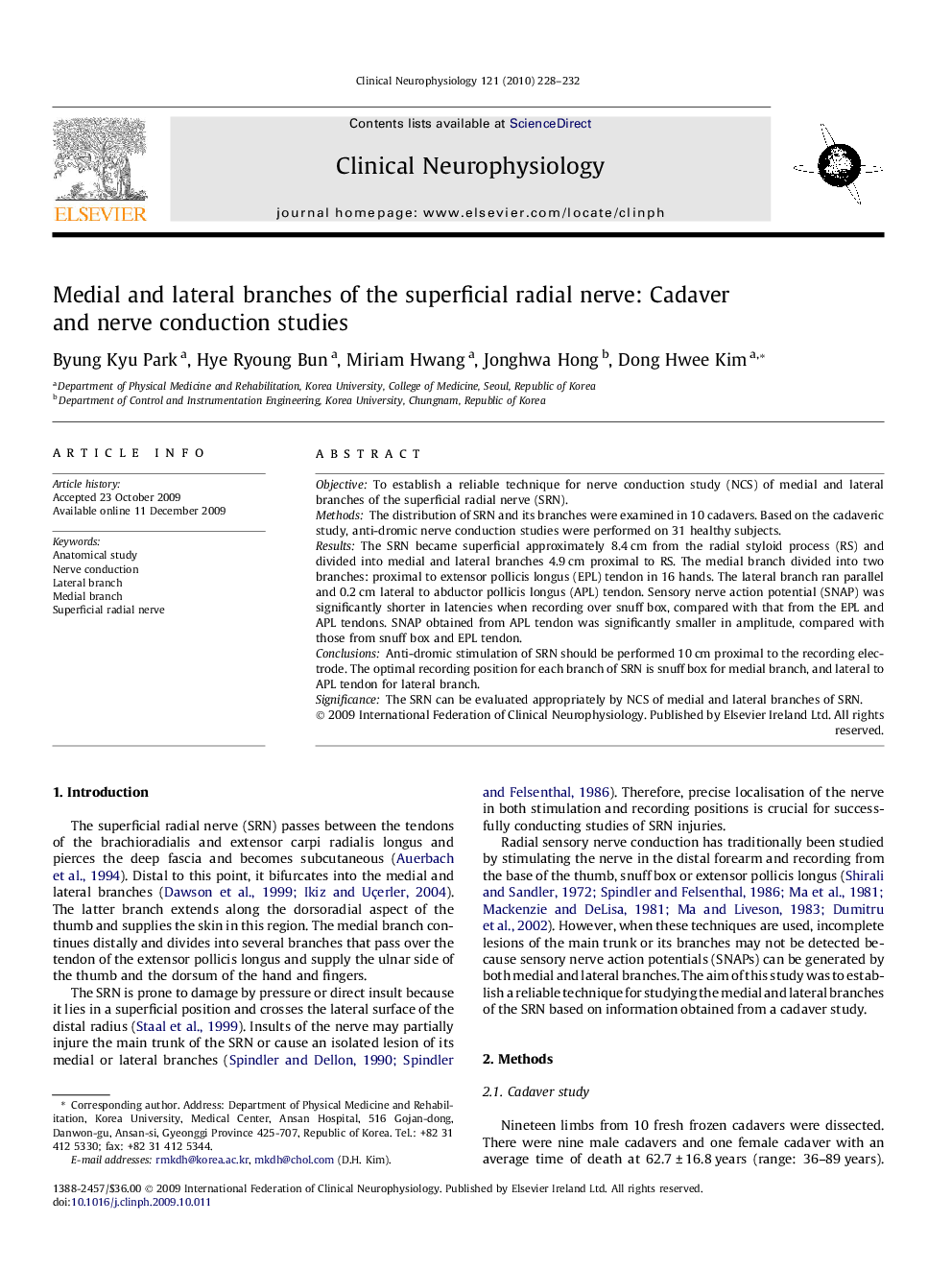| Article ID | Journal | Published Year | Pages | File Type |
|---|---|---|---|---|
| 3045326 | Clinical Neurophysiology | 2010 | 5 Pages |
ObjectiveTo establish a reliable technique for nerve conduction study (NCS) of medial and lateral branches of the superficial radial nerve (SRN).MethodsThe distribution of SRN and its branches were examined in 10 cadavers. Based on the cadaveric study, anti-dromic nerve conduction studies were performed on 31 healthy subjects.ResultsThe SRN became superficial approximately 8.4 cm from the radial styloid process (RS) and divided into medial and lateral branches 4.9 cm proximal to RS. The medial branch divided into two branches: proximal to extensor pollicis longus (EPL) tendon in 16 hands. The lateral branch ran parallel and 0.2 cm lateral to abductor pollicis longus (APL) tendon. Sensory nerve action potential (SNAP) was significantly shorter in latencies when recording over snuff box, compared with that from the EPL and APL tendons. SNAP obtained from APL tendon was significantly smaller in amplitude, compared with those from snuff box and EPL tendon.ConclusionsAnti-dromic stimulation of SRN should be performed 10 cm proximal to the recording electrode. The optimal recording position for each branch of SRN is snuff box for medial branch, and lateral to APL tendon for lateral branch.SignificanceThe SRN can be evaluated appropriately by NCS of medial and lateral branches of SRN.
